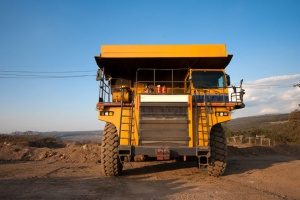Site Safety Inspections before Your Fill Dirt Delivery
 You are probably anxious to move forward with your project. You may have already had some site preparation done, and you know that a fill dirt delivery is definitely going to be needed. But wait – there is one more thing you’ll need to do before the dirt is delivered. That step is a site safety inspection.
You are probably anxious to move forward with your project. You may have already had some site preparation done, and you know that a fill dirt delivery is definitely going to be needed. But wait – there is one more thing you’ll need to do before the dirt is delivered. That step is a site safety inspection.
If you are working with a reputable contractor, you probably know that no dirt will be delivered until some kinds of site safety inspections are completed. This inspection is not just a formality. It can save you and the contractor significant expense and avoid serious injuries.
You may already be working with a dirt contractor and planning to take delivery soon. Your contractor may already have visited your site to do the inspection.
What do good site safety inspections involve?
1. Soil Quality Analysis
Before you take delivery on fill, you need to make sure that you’re getting the kind of dirt you need. To do that, a site inspector (or perhaps a soil engineer) will need to inspect and evaluate the condition of the soil on your site. Chances are good that your builder or dirt contractor is experienced in your area. If so, they can make some fairly accurate evaluations, but your project may require a more detailed assessment, especially if your project is complex or if it is near existing or older structures. A soil quality evaluation can determine such things as whether the existing soil can provide the solid base your project needs and if not, what type of dirt is needed to meet the building code. The inspector may be able to identify the depth of the ground water and similar matters that are important to the project’s safety and success. If not, a soil engineer may be needed.
2. Soil Type
As part of this site inspection, the inspector can determine the type of soil at your site. The type of soil you have on your site is important to figuring out what type of fill dirt you need. If the dirt on your site is filled with organic material, for example, you do not have an adequate base to support a construction project. Organic materials decompose and cause the base to settle and sink, which will cause any structures built on top of it to fail. Fill dirt consists of subsoil that has little to no organic material in it, and will provide a stable base for your structure.
3. Obstructions Above and Under Ground
 An evaluation of the dirt on your site does not end the inspection. The inspector will also need to identify all structures that are buried on the site. For example, those structures often include pipes, cables, septic tanks, propane tanks, water tanks, and even old swimming pools. Underground utilities need to be located and marked, all relevant contractor personnel informed.
An evaluation of the dirt on your site does not end the inspection. The inspector will also need to identify all structures that are buried on the site. For example, those structures often include pipes, cables, septic tanks, propane tanks, water tanks, and even old swimming pools. Underground utilities need to be located and marked, all relevant contractor personnel informed.
Above ground, the structures may include propane tanks, sheds, transformers, fences, and other improvements. In addition, the contractor needs to be careful not to bury important structures such as basement windows and ventilation outlets for septic tanks and gas vents.
If the project site is near an area with heavy traffic, the inspector will need to plan for proper traffic controls to be deployed when the dirt is delivered. They may include barriers, flags, signs, and other controls as appropriate for the site.
Finally, the inspector will assess the ingress and egress for the dirt delivery. That is, the inspector will figure out whether the delivery trucks will be able to get onto the site as is, or whether special arrangements will be needed to access it safely.
4. Correctly Assess the Quantity of Fill You Need
The site inspector knows how to calculate the amount of fill you need to ensure that you have enough for your project, but not much more than you need, either. You can estimate it yourself ahead of time if you know the formula to use. The formula for a rectangular shaped area is to multiply the length and width, then the depth (or height) of the area. For a circular shaped area, multiply 3.142 (pi) by the radius squared, then by the depth. That will give you a very rough estimate, but the inspector can tell you exactly how much fill you will need.
5. Excavation Safety
If your job will involve excavation, your contractor will likely need to inspect the soil conditions every day. Depending on the depth of the excavation, your contractor will need to arrange for appropriate precautions against collapse. A certain amount of extra planning needs to occur prior to delivery of fill dirt needed relative to any excavations.
Contact a Fill Dirt Supplier for More Information
Before you try to do it yourself, contact a reputable fill dirt contractor. A dirt contractor can answer your question and conduct site safety inspections to help you figure out what you need. Your project may be relatively simple. However, the more complicated your project, the more you will benefit from working with a professional dirt contractor. A professional dirt contractor can make sure your project complies with any building codes, obtains necessary permits, satisfies safety requirements, and generally gets done right the first time.








































